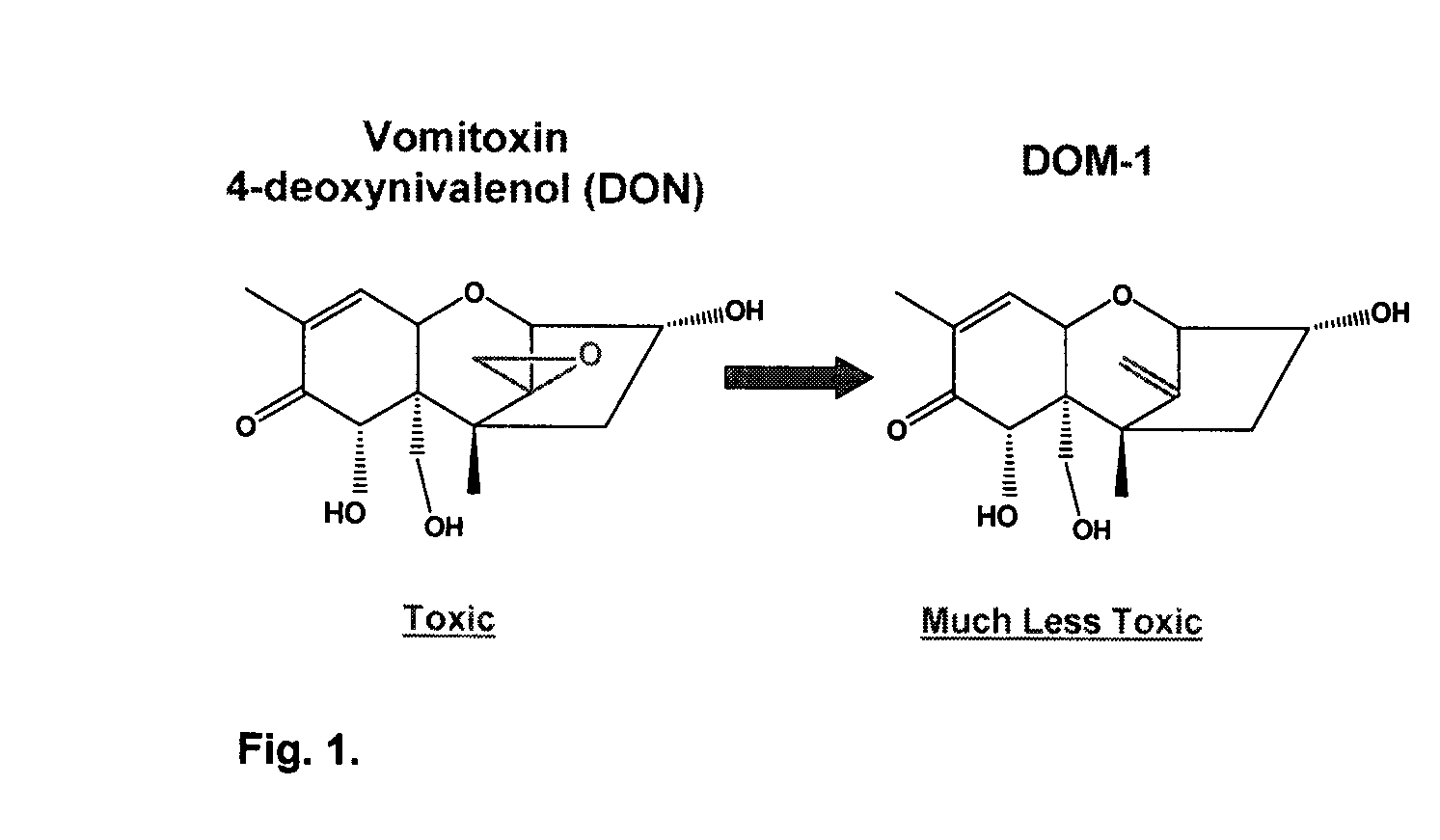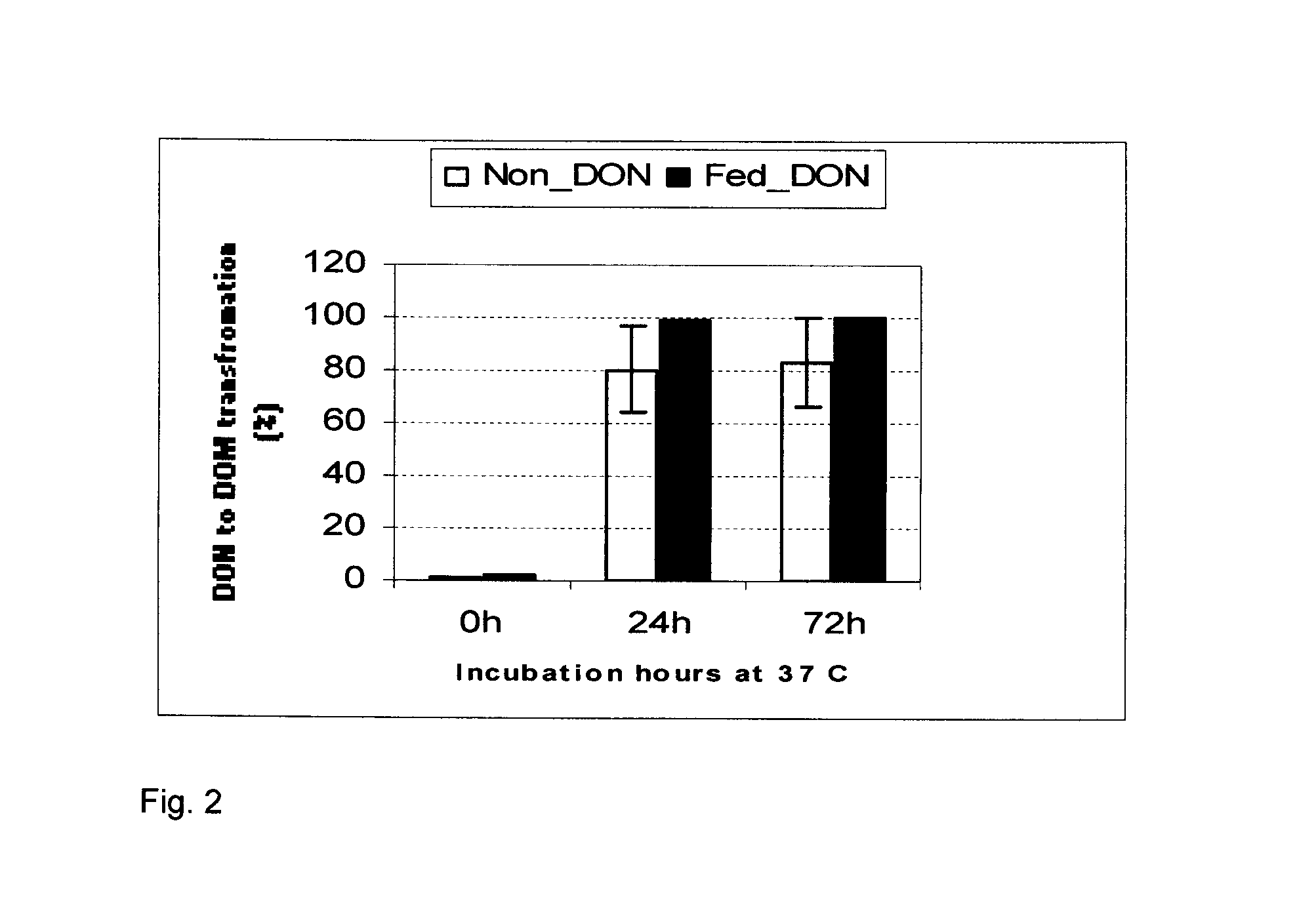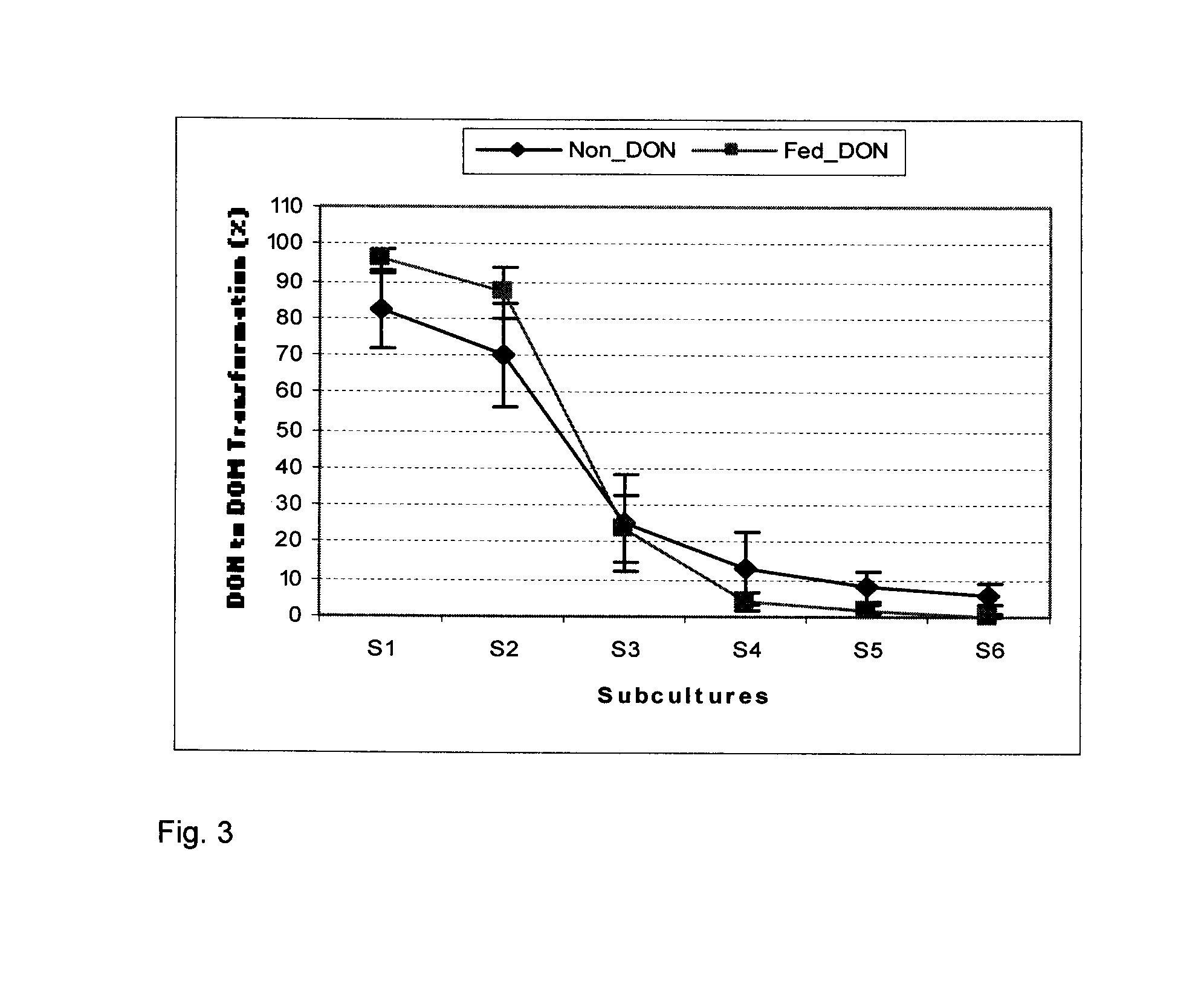Bacterial isolate and methods for detoxification of trichothecene mycotoxins
a technology of trichothecene and mycotoxins, which is applied in the field of detoxification microorganisms, can solve the problems of increasing the risk of mycotoxins in the food and livestock industry, serious threat to human health and food and livestock industries, and the control of mycotoxins is a global challenge, so as to prevent or reduce mycotoxins
- Summary
- Abstract
- Description
- Claims
- Application Information
AI Technical Summary
Benefits of technology
Problems solved by technology
Method used
Image
Examples
example 1
Detoxification of Deoxynivalenol with Bio-Transforming Microorganisms
[0055]Deoxynivalenol (DON) or vomitoxin can be transformed to a much (several hundred times) less toxic compound, de-epoxy vomitoxin (DOM-1 or DOM) by microorganisms (FIG. 1). The contents from the large intestine of chickens was able to detoxify vomitoxin by converting DON (either as a pure chemical or in contaminated grains) to DOM-1, while contents from other gut regions showed little or no activity. Table 1 shows the ability of different species of chicken to convert DON to DOM-1. The White Leghorn hens were much more efficient at converting DON to DOM-1 than were Isa Brown hens. The detoxification appeared to be biological since autoclaved large intestinal samples showed no activity of detoxification. Detoxification of vomitoxin in contaminated grains was also examined at different incubation temperatures. Although the conversion rate was slightly higher at 30° C., incubation at both 30° C. and 37° C. was able...
example 2
Detoxification of DON with Bio-Transforming Microorganisms
[0057]Digesta were collected from crop, small intestine and large intestine of Leghorn hens raised with feeds mixed with clean and contaminated wheat containing 0 or 10 ppm DON, respectively. The digesta were added either directly or after being autoclaved, to a medium containing purified DON. The resulting mixtures were incubated for 0, 24 and 72 hours and subcultured for six generations at 37° C. before being processed for chemical analysis. The extent of transformation of DON to DOM-1 was determined by using a Liquid chromatography-mass spectroscopy (LC-MS).
[0058]Data presented in FIG. 2 showed that, compared to the non-DON control, digesta of the large intestine from chickens fed with contaminated wheat were more effective in transforming DON. Without wishing to be bound by theory or limiting in any manner, this may have resulted from increased population and / or improved efficacy of the active microorganisms in the chicke...
example 3
Identification / Isolation of bacterial isolate 18027-1 (IDAC)
[0061]Testing of a plurality of bacterial isolates, derived from various digestive regions of several chickens revealed that a variety of bacterial strains exist with differing abilities to detoxify trichothecene mycotoxins. Extensive screening allowed for the identification of a particular strain of bacteria with substantial trichothecene mycotoxin detoxifying activity. Characteristics of the bacterial isolate (termed bacterial isolate 180507-1 (IDAC) is described below.
[0062]Genomic DNA of the bacterial isolate 180507-1 (IDAC) was extracted with QIAGEN DNeasy Tissue Kit and 16S rRNA genes were amplified by PCR using eubacterial primers F8 (5′-AGAGTTTGATCCTGGCTCAG-3′) (SEQ ID NO:1) and R1541 (5′-AAGGAGGTGATCCAAGCC-3′) (SEQ ID NO:2). PCR products were directly sequenced using primer 16S1100r (5′-AGGGTTGCGCTCGTTG-3′) (SEQ ID NO:3). Partial 16S rRNA sequences corresponding to Escherichia coli 16S rRNA gene bases 300 to 1050 w...
PUM
 Login to View More
Login to View More Abstract
Description
Claims
Application Information
 Login to View More
Login to View More - R&D
- Intellectual Property
- Life Sciences
- Materials
- Tech Scout
- Unparalleled Data Quality
- Higher Quality Content
- 60% Fewer Hallucinations
Browse by: Latest US Patents, China's latest patents, Technical Efficacy Thesaurus, Application Domain, Technology Topic, Popular Technical Reports.
© 2025 PatSnap. All rights reserved.Legal|Privacy policy|Modern Slavery Act Transparency Statement|Sitemap|About US| Contact US: help@patsnap.com



